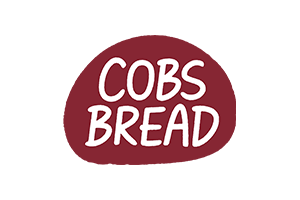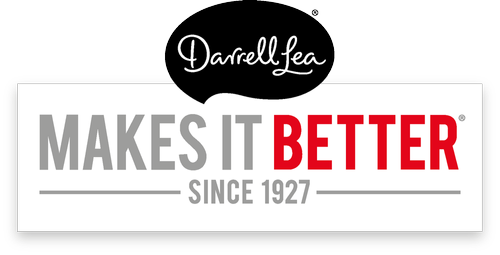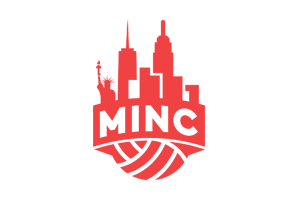Are you planning a short trip to the US? If you're traveling for business or tourism, the B1/B2 visa is one of the simplest ways to gain entry to the USA. Read this guide to learn about the B1/B2 visa rules, find out if you're eligible, and how to apply for it.
Everything you need to know about the B1/B2 Visa
- What is a B1/B2 Visa?
- How is a B1/B2 Visa Different From the Visa Waiver Program?
- What are the B1/B2 Visa Rules and Requirements?
- How Long Is My B1/B2 Visa Valid?
- Can I Enter the US More Than Once on a B1/B2 Visa?
- How Long Can I Stay in the US on a B1/B2 Visa?
- Can B1/B2 Visa Holders Extend Their Stay?
- Can I Renew My B1/B2 Visa?
- What Happens if B1/B2 Visa Holders Overstay Their Visit?
- What Are the B1/B2 Visa COVID-19 Extensions and Rules
- Can B1/B2 Visa Holders Travel to the US Now During COVID-19?
- What is the B1/B2 Visa Number?
- How Much Does a B1/B2 Visa Cost?
- What is the B1/B2 Visa Processing Time?
What is a B1/B2 Visa?
A B1/B2 visa allows you to enter the US temporarily for business or pleasure for up to 6 months. It's a non-immigrant visitor visa, meaning you must return home when your trip is over. You often see B1/B2 visas referenced together because they're different categories of the same visa. So they work the same way, and the visa application process is the same.
A B1 visa allows you to enter the USA to participate in business activities such as attending a professional conference or training, meeting colleagues, or conducting a site visit.
A B2 visa covers tourism, including visiting family members, sightseeing, receiving medical treatment, participating in unpaid amateur musical or sporting events, and doing recreational study not credited towards a degree.
How is a B1/B2 Visa Different From the Visa Waiver Program?
The B1/B2 visa and Visa Waiver Program (VWP) both allow you to travel to the US for business or tourism.
However, the maximum length of stay in the US on the VWP is 90 days. And as the name implies, you don't need a visa. Instead, you apply online for an Electronic System for Travel Authorization (ESTA). So the VWP is much simpler and less costly than a B1/B2 visa. You can apply for the VWP online and don't need to attend an interview. But if your length of stay in the US needs to be longer than 90 days, a B1/B2 visa is a straightforward option.
Learn more about the Visa Waiver Program and how to apply for an ESTA here.
What are the B1/B2 Visa Rules and Requirements?
To be eligible for a B1/B2 visa, you must be able to demonstrate:
- The purpose of your trip is for a business or tourist activity of a legitimate nature,
- Your trip is for a limited period for a specific purpose,
- You have sufficient personal funds to cover your travel, accommodation, and living expenses in the US for the duration of your B1/B2 visa,
- You have a residence and ties to a country outside the US,
- You intend to depart the US after your trip.
As a B1/B2 visa holder entering the USA, you're not allowed to:
- Accept a job from a US employer,
- Work for a US employer,
- Get paid for a performance, e.g., a musician paid by an audience,
- Work as foreign press,
- Undertake study credited towards a degree,
- Enroll in a student or exchange visitor program,
- Travel to give birth in the USA and gain US citizenship for your child.
Learn more about the B1/B2 visa rules and regulations here.
How Long Is My B1/B2 Visa Valid?
The validity period of your B1/B2 visa is up to 10 years from the date it was issued.
So you use it to enter the US (for the purpose you indicated on your application) until the expiration date. You can find the expiration date on your B1/B2 visa stamp.
Be aware that the expiration date on your B1/B2 visa is different from the date you're authorized to remain in the US. Your authorized date is on the I-94 admission stamp you receive from the US Customs and Border Protection (CBP) officer at the port of entry to the US.
Can I Enter the US More Than Once on a B1/B2 Visa?
Yes! Unless otherwise advised, your B1/B2 visa allows you to enter the US multiple times.
Your passport's B1/B2 visa stamp will state “Entries M” for multiple entries.
How Long Can I Stay in the US on a B1/B2 Visa?
Your length of stay in the US on a B1/B2 visa is a maximum of 180 days.
On your B1/B2 visa application, you specify the length of stay required for your trip. When you enter the US on a B1/B2 visa, the CBP officer will stamp your passport with an I-94 admissions stamp which specifies the date you MUST depart the US.
Can B1/B2 Visa Holders Extend Their Stay?
Yes! You can apply for a B1/B2 visa extension to stay in the US beyond the date indicated on your I-94 admissions stamp.
To extend your stay, file Form I-539 Application to Extend/Change Nonimmigrant Status at least 45 days before your authorized stay expires. You must provide a written statement and evidence to explain why the visa extension is necessary. You can extend a B1/B2 visa up to a maximum of 6 months. That's because the maximum total time permitted in a B1/B2 status for one trip is one year.
Learn how to file an extension to your B1/B2 visa here.
Can I Renew My B1/B2 Visa?
No! A B1/B2 visa is a temporary visa, so you can't renew it.
However, you can re-apply for a new B1/B2 visa for a subsequent trip at a US Consulate or Embassy outside the US.
What Happens if B1/B2 Visa Holders Overstay Their Visit?
Do not overstay your B1/B2 visa under any circumstances.
If you fail to depart the US before your authorized date, you're considered out of status. Your visa is automatically voided, and you may be ineligible for a US visa in the future. If you're a B1/B2 visa holder and at risk of overstaying while you're in the US on a B1/B2 visa, get help from an immigration attorney pronto.
The exception to this is if your predicament is COVID-related.
What Are the B1/B2 Visa COVID-19 Extensions and Rules
Under normal circumstances, you must depart the US before your authorized stay expires. That is, the date indicated on your I-94.
But what if you're stuck in the US and can't return home due to COVID-related flight restrictions or border closures?
Hopefully, stranded travelers are few and are between by this point. In recognition of extraordinary circumstances arising from COVID-19, US Citizen and Immigration Services (USCIS) communicated the following guidance:
Apply For a B1/B2 Visa Extension
- To apply for a B1/B2 visa extension, file Form I-539 online. USCIS continues to accept and process applications throughout COVID.
- You must provide a written statement explaining why you cannot depart the US before your authorized date and why it's due to COVID-19.
- You need to demonstrate that you can support yourself financially during your stay in the US for the extension period.
- You must prove your stay in the US is temporary and that you intend to return home.
- Additionally, you must submit the documents required for your original application, including a valid passport and a passport photo.
- If your spouse and/or dependent children entered on a B2 visa with you, you must also file an extension for each of them, though you can use the same Form I-539.
File Your Extension Before Your B1/B2 Visa Expiration Date
- This is very important! Filing Form I-539 before your authorized stay expires means you (generally) won't accrue unlawful presence while your application is pending.
- The 13-digit case number issued by USCIS when you file is proof you submitted your application.
File Your Extension EVEN IF You've Already Stayed Beyond Your Authorized Date
- If there are “extraordinary circumstances” why you could not file a B1/B2 visa extension due to COVID-19, still go ahead and file an extension request ASAP using Form I-539.
- You need to submit a written statement and evidence explaining why you could not depart the US nor file an extension on time and how it's related to COVID.
- USCIS will evaluate your case and may excuse your failure to file an extension request on time if they deem your evidence credible.
Apply For a Change of Status
- If your circumstances in the US have changed, you may be eligible to apply for a Change of Status (COS) to transfer to a different visa. Consult an immigration specialist for help.
- To apply for a COS, file Form I-539 online.
- The guidelines above apply, RE: the importance of filing before your authorized stay expires and what to do if you've already overstayed it.
In addition, if you're stranded in the US due to COVID-19:
Check USCIS For Updates
- The grace period for COVID-related extensions is expected to end soon, so always check USCIS for current information before proceeding.
Don't “Do Nothing”
- If you're unsure how to proceed, DON'T “do nothing.”
- Even if you depart the US, the authorities have access to your records that show you overstayed your B1/B2 visa. Accruing unlawful presence could make you ineligible for a US visa in the future.
- Consult an immigration attorney for help.
Learn more about USCIS response to COVID-19 here.
Can B1/B2 Visa Holders Travel to the US Now During COVID-19?
Yes! Travel to the US has resumed for visitors with a valid B1/B2 visa.
Be aware of the current COVID-19 advisories for travel and entry into the US for B1/B2 visa holders:
- You must show proof of being fully vaccinated against COVID-19 before traveling by air to the US from a foreign country.
- As of June 12, 2022 you no longer need to show a negative COVID-19 test result before you board a flight to the US.
Learn more about travel to the US during COVID-19 for B1/B2 visa holders here.
What is the B1/B2 Visa Number?
Your B1/B2 visa foil number is a number in red appearing below the expiration date on your B1/B2 visa. Chinese nationals with a 10-year B1/BW visa must enroll in the Electronic Visa Update System (EVUS) using their B1/B2 foil number, in order to travel to the US.
How Much Does a B1/B2 Visa Cost?
The current filing fee for a B1/B2 visa is USD $160.
Generally, you pay the fee in the local currency of the US Consulate or Embassy, where you submit your application. The US Department of State sets the consular currency exchange rate.
What is the B1/B2 Visa Processing Time?
The time it takes to get a B1/B2 visa includes the wait time for a visa interview plus the actual visa processing time.
Wait times for visa interviews at a US Embassy or Consulate vary by location. Check the estimated wait times here.
The current wait times around the world are, to put it mildly, lengthy. This is an unfortunate reality due to COVID-related backlogs and in Australia, for example, the temporary closure of the Sydney office.
For a chance to secure an earlier appointment,fill out the DS-160 online and pay the fee. Then you'll be able to check regularly (daily) for new appointments opening up due to cancellations.
For information on visa locations, reviews of experiences, ratings, and feedback, go to the America Josh US Visa Location Guide.
Once you complete your interview, the B1/B2 visa processing time is typically under 30 days.
How Do I Apply for a B1/B2 Visa?
Learn more about how to apply for a B1/B2 visa here.
Recommended B1/B2 Visa Lawyers
For professional assistance, the following legal and immigration specialists are recommended:
Doug Lightman from Lightman Immigration
More Information About the B1/B2 Visa
Get the basics of B1/B2 visa rules and how to apply here.
For comprehensive and well-organized information about B1/B2 visas, check the US Visa Information Service. Be aware that the US Department of State is the definite source of visa information and takes precedence if there are any discrepancies.
Frequently Asked Questions About B1/B2 Visas
Yes! Form 160, the application form for a B1/B2, includes a question to collect all your social media identifiers/handles (though not your passwords) on the platforms specified.
Could posting on social media jeopardize your B1/B2 application? Possibly. An immigration attorney can give a definitive answer for your situation.
However, remember that the consular officer at your interview will evaluate ALL the information you've supplied to determine your eligibility for a B1/B2 visa. It’s their job to do this. So if any part of your application is at odds with the B1/B2 requirements (including fraudulent answers and malicious intent), you may be denied. Or worse, you could face legal strife with US authorities. As Australians, we’ve already got special privileges to work in the US through the E3 visa. We have a responsibility as an expat community to properly follow the rules for traveling to the US.
So be smart about what you post online and be honest in your B1/B2 application. If you have specific questions about living or working in the US, speak to an immigration specialist directly about your situation.
Legally, you're not allowed to job hunt on a B1/B2 visa. That's because you applied for the visa on the grounds of visiting the US for a specific business or tourism activity and intend to return home afterward.
But what if your circumstances change while you're in the US, e.g., you're offered a job? You can apply for an adjustment of status to a category that authorizes you to work in the US. Consult an immigration specialist for help.
Yes! The B1/B2 visa rules permit volunteer work on a B1/B2 visa, provided you don't receive any rewards or compensation.
The position must be clearly advertised as a volunteer opportunity open to non-US residents. You must demonstrate that the volunteer opportunity does not violate any laws designed to prevent the exploitation of foreign residents nor takes away jobs from paid employees.
Finally, if you're looking for work visa information, you can see our summary here.
Maybe! It depends on the nature of the course.
Under the B1/B2 rules, you're not permitted to undertake study credited towards a degree. So if you want to live your dream of being an Ivy League or US community college graduate, look into an F or M educational visa.
You're also not permitted to enroll in a student or visitor exchange program on a B1/B2 visa. For that, you need a J1 visa.
However, you ARE allowed to take short courses for recreational purposes under the B1/B2 visa rules. So if you've always wanted to know the secrets of making an authentic New York bagel or how to appreciate wine from the Napa Valley—knock yourself out.
Under the B1/B2 visa rules, a spouse or family members are not eligible for a dependent visa. If they plan to accompany you on your US visit, they must each apply for their own B2 visa.
The B1/B2 visa is a non-immigrant visa, meaning you don't intend to stay in the US once your trip ends.
However, if your situation changes while you're in the US, you can request a change in your non-immigrant status to another category. To do this, file Form I-539. An example is if you marry a US citizen and apply for a Green Card. Consult an immigration attorney for help with this situation.














